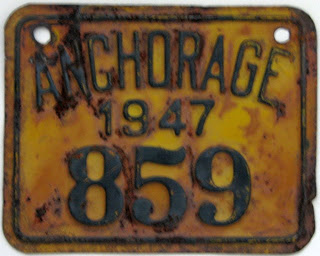In the age of eBay, good plates are harder to find on the ground. You can still find some gems if you're prepared. Here's some plate-shopping advice (for at the Fair, or anywhere else):
Take your price guide. This may be obvious, but it's sometimes hard to tell if an unusual plate is priced reasonably. Bob and Chuck Crisler's License Plate Values is a great general reference, though it only speaks to passenger plates. Check the completed auctions on eBay to get a feel for the pricing of plates you're interested in.
Take your collection with you. It's good exercise. :-) OK, not literally, but you should take your lists with you. Don't just take the list of plates that you want (what collectors call their "want list"), but also take a detailed list of what you have. You never know what information you'll need to make a good buying decision.
A picture is worth a thousand words. Don't just take a text list of what you have -- take photos, too. If you're not already taking pictures of all of the plate s in your collection, think about doing so. I use Irfanview's "contact sheet" feature to print out a page full of photos of all of the plates in my collection, so that I can instantly tell exactly how good of an upgrade I'm looking for.
Watch for sharks. Some sellers at the Fair are obviously trying to gouge people, especially late-season tourists. Here are some bad signs:
- Plates are priced significantly higher than your idea of their value. If they're selling a single '76 Bear plate for $40 or more, they're trying to gouge people.
- Lots of the plates are unlabeled and unpriced.
- Replicas are not marked as such.
- The seller tries to pressure you into buying right away instead of thinking about it and coming back later.
- The seller seems to be sizing you up to see how much to charge you.
Happy hunting!


















